Miss Lavinia and Miss Clarissa partook, in their way, of my joy. It was the pleasantest tea-table in the world. Miss Clarissa presided. I cut and handed the sweet seed-cake – the little sisters had a bird-like fondness for picking up seeds and pecking at sugar; Miss Lavinia looked on with benignant patronage, as if our happy love were all her work; and we were perfectly contented with ourselves and one another.
Charles Dickens, David Copperfield, 1849
I do love a seed cake, once a key element of a British teatime table. Sadly, it’s largely either forgotten, or worse, ignored in our modern world of ‘instagrammable’ drizzle cakes, or multi-coloured creations slathered with luxurious buttercreams and frostings. With that sort of competition, the poor old seed cake doesn’t get a look in, bless it. As a result, the only way you are going to taste is to make one.
For those in the dark as to what I’m banging on about, a seed cake is a plain, rather dry cake flavoured subtly with caraway. It’s texture is similar to that of a madeira cake; dry enough so that it is perfect to have with a nice cup of tea for your elevenses. It has just the right amount of clack, as we northerners say; a tendency to stick to the roof of your mouth. Don’t let this put you off – it’s plainness is what makes it perfect. Super-sweet cakes covered with their myriad fillings are fine, but often a little too much to take.
Seed cakes appear in cookbooks from the seventeenth century, but only really became a cornerstone of the tea table in the eighteenth. They were a different beast then; sugary cakes also said something of both your status and sensibilities, so other things were added. Hannah Glasse added allspice, cinnamon and ambergris in one of her recipes.1 It was a time before chemical raising agents too, so cakes at this time were made light by the action of live yeast. Seed cake, therefore, was reserved for those who had a taste for the finer things in life, such as Parson Woodforde, diarist and great lover of cakes, puddings, pies and confectionary. He loved listing what he’d had for dinner. Take this entry from 17 August 1778:
7 p.m. Hot hash, or cold mutton pies. Saturday night an addition of good seed-cake of one pound, covered with sugar and a quart of good beer poured over it.2
Fast-forward a century and we see that the seed cake is pretty much what we would expect to see; the only difference being that a splash of brandy, rather than milk, is used to slacken the mixture.3
A seed cake cannot be made with any other seed than caraway. Sure, you could swap them for poppy seeds or some such, but you will have made a cake with seeds in it, not a seed cake! What’s so special about caraway then? Well, caraway was used to flavour all sorts of foods ever since ancient times, because unlike the other spices* it grew happily throughout Europe. It is an essential flavouring in German sauerkraut for example. In Britain, folk seemed to prefer to use in sweet foods, as Elizabeth David noted: “Apart from seed cake, (why were those cakes always so dry?) once the great English favourite, and caraway sweets and comfits, caraway appears little in English cooking.”4
If you like the blogs and podcast I produce, please consider treating me to a virtual coffee or pint, or even a £3 monthly subscription: follow this post for more information.
Elizabeth’s quote eludes as to why this cake fell out of favour – it’s viewed as boring, dry, stale perhaps, but I disagree. It is light, and because it contains very little liquid compared to, say, a moist Victoria sponge, it is paramount that the butter and sugar are well creamed together, the flour is carefully folded in without over-mixing, and that it is not over-baked. This is where I fear folk may go wrong: baking an extra ten minutes, just to be on the safe side, will produce a dry, boring cake. Done well, however, a seed cake can be as superlative as any Proustian madeleine.
175 g salted butter, softened
175 g caster sugar
3 eggs
250 g self-raising flour
1 tbs ground almonds
1 tbs caraway seeds
Around 3 tbs milk (or brandy)
Preheat your oven to 180°C and line a 2 pound loaf tin (usually around 23 cm long) with greaseproof paper, keeping it in place with a smear of butter or cooking oil.
In a mixing bowl cream the softened butter until pale and fluffy. Add an egg and one tablespoon of the flour and beat in until smooth. Repeat with all of the eggs. Mix the remaining flour with the ground almonds and caraway seeds and tip into the mixture.
Fold in carefully and when combined, add the milk (or brandy) to loosen the batter slightly – unlike a regular sponge, you are not looking for a dropping consistency with seed cake, so don’t go overboard: start with two tablespoons and see how it looks.
Spoon into the tin and smooth the top – you don’t have to be fastidious here, as the batter cooks it levels out all on its own.
Bake for around an hour – this will depend on the dimensions of your tin, in my wide one, it took just 55 minutes. Test with a skewer if it is ready – I’ll say it again: it’s important not to overbake seeing as the batter is on the dry side.
Let it cool in its tin for 15 minutes before removing and cooling on a rack. These sorts of cakes are best eaten on the day, or the day after, they are baked.
*Mustard also grows in Europe, hence its heavy use in British recipes throughout history.
References:
1. Glasse, H. The Art of Cookery Made Plain and Easy. (Prospect Books facsimile of the 1747 original).
2. Woodforde, J. The Diary of a Country Parson Volume 2. (Oxford University Press, 1924).
3. Beeton, I. The Book of Household Management. (Lightning Source, 1861).
4. David, E. Spices, Salt and Aromatics in the English Kitchen. (Penguin, 1970).



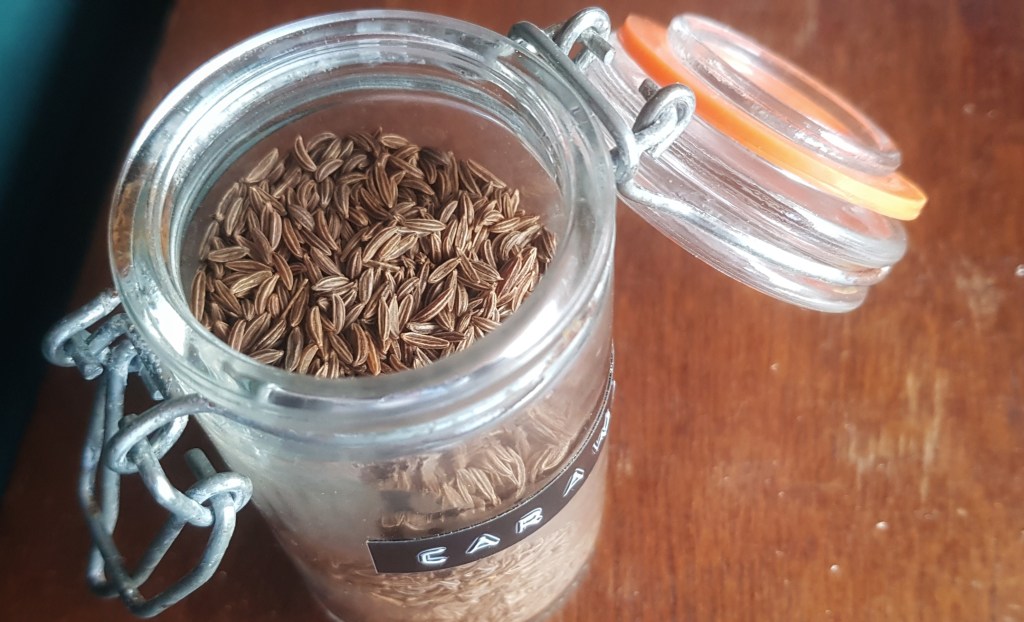
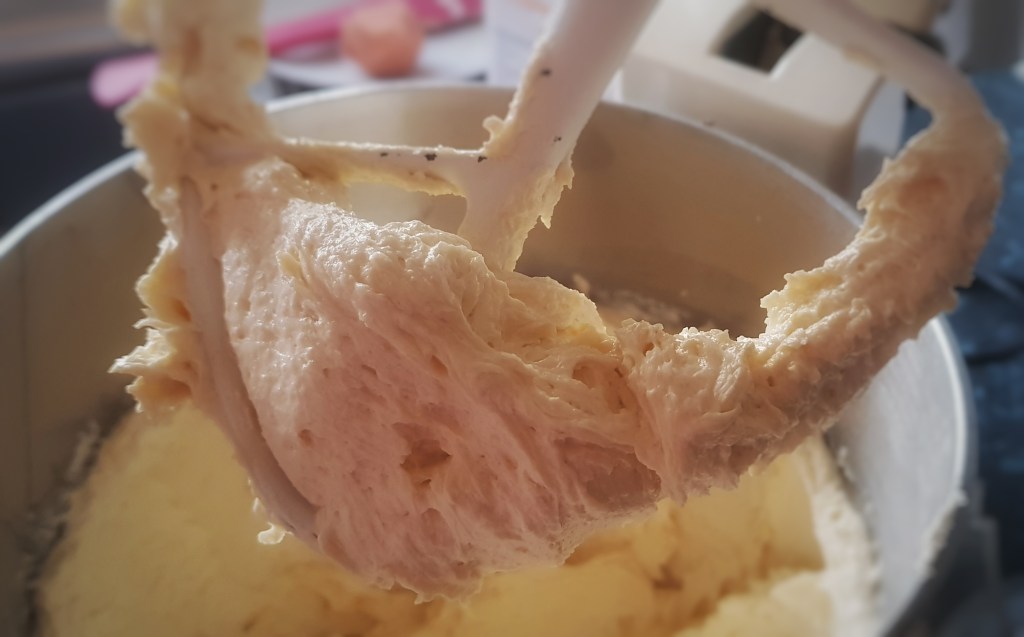
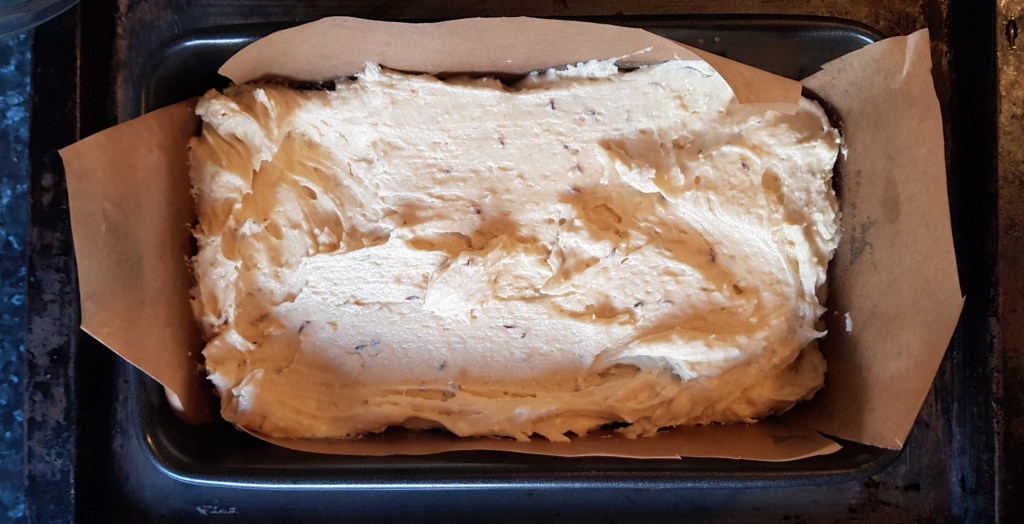
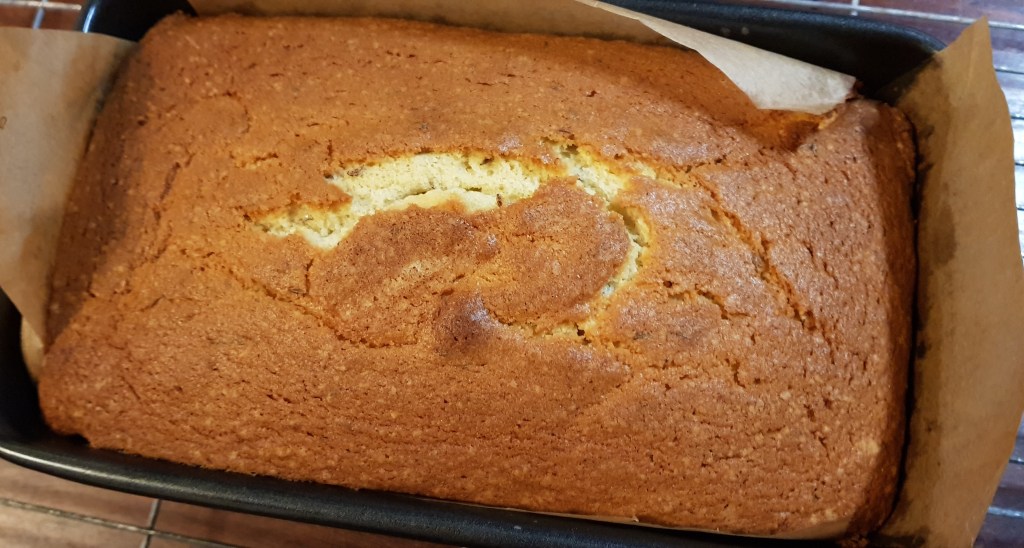
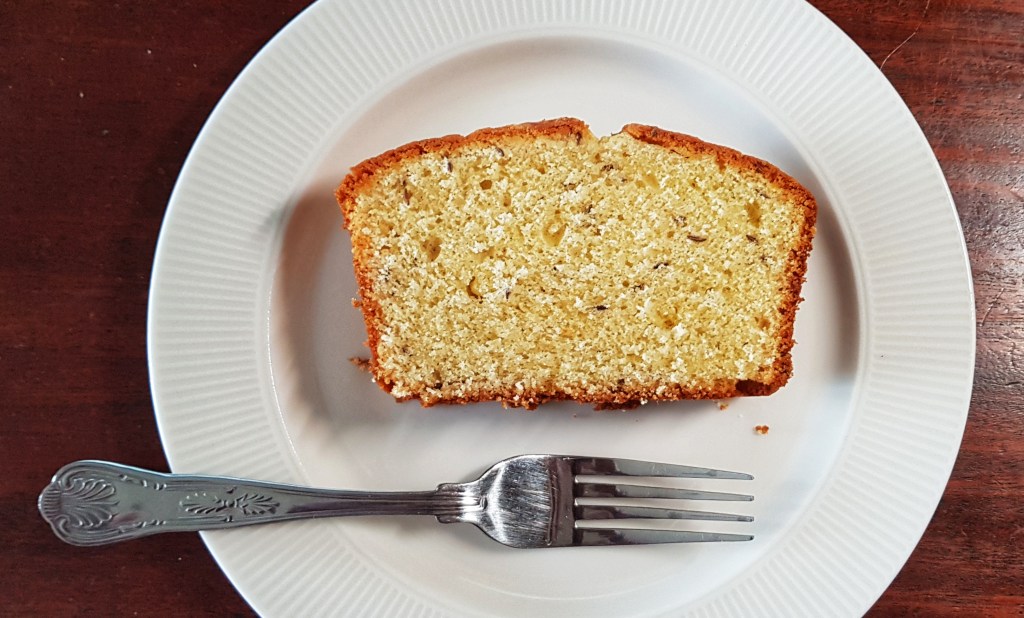
I remember trying to pick the seeds out of a seed cake when I was a child. We were at a friend’s house and my mother made me eat the whole slice, to be polite, despite really not liking it at all.
LikeLiked by 1 person
Haha. Yes u can imagine they’re not much of a kid’s cake. Have you come round to them now you’re a grown up?
LikeLike
Yes I can imagine children not liking them too much! Have you developed a taste for them now you’ve grown up?
LikeLike
A lovely reminder Neil. I haven’t made one in years. And a particularly lovely reminder of how good it is when made with brandy as my York grandmother did whenever she hadn’t drunk the brandy first (A visit to her always involved a small flask of brandy for her health – she never bought it for herself but loved her tot at bedtime, and a drop in her afternoon tea, and her morning tea, and……..)
I wonder if it fell out of favour simply because you have to fold in the flour by hand? I’ve tried it several times with different mixers and it simply doesn’t come out right, though starting with the mixer means a welcome decrease in the amount of elbow grease that must be employed.You are absolutely right that the reputation for dryness comes from overbaking. I suspect the caraway seeds in the cupboard are past their best by now – time to add them to the shopping list
thank you
kathryn
marsh.kathryn@gmail.com
087 7754199
Castleview Tobersool Balbriggan Co. Dublin
>
LikeLiked by 1 person
Hello Kathryn.
Thanks so much for your comments – I might have to try making it with a bit of brandy, if it gets yours and your grandmother’s approval.
Seed cakes require the gentle touch for sure and with many people used to baking by the all-in-one method for sponge cakes these days, plus the misconception they are both boring and a faff, add to that the risk of over-baking, it doesn’t stand a chance. It’s a shame though, ‘cos it’s a guddun.
LikeLike
I’ve wanted to make a seed cake ever since I read Agatha Christie’s At Bertram’s Hotel. Miss Marple was so excited to see seed cake on the tea menu! And that was 44 years ago, when I was in college. Guess it’s time I made it! Thank you for the onolicious sounding recipe! (Ono means super delicious in Hawaiian!!)
LikeLiked by 1 person
It’s rather pleasing to know that Miss Marple was such a fan! If you have a go at making one, let me know how you get on…
LikeLike
Thank you so much for this evocative post – which triggered a long ago
memory of my granny’s seed cake. Seed cake seems to be rather like Marmite, if you’re not introduced to both at an early age, they will seem a strange and off-putting item.
LikeLiked by 1 person
Thanks for your lovely comment…I’m so glad it brought back some memories of your gran. I think you might be right about seed cakes though…love or hate!
LikeLike
I love the of seed cake, mostly from the many books where it makes an appearance, I just really don’t like the taste of caraway sadly 😦
I’ll have to make do with cake with seeds in it I think 😉
LikeLike
I bake many cakes but didn’t heard or even think about seed cakes. But it sounds great and I am going to try this today.
LikeLiked by 1 person
Great! Let me know how you get on
LikeLike
This immediately brought to mind Agatha Christie and Miss Marple At Bertram’s Hotel.
‘We are serving very good seed cake, my lady. I can recommend it.’
‘Seed cake? I haven’t eaten seed cake for years. It is real seed cake?’
‘Oh, yes, my lady. The cook has had the recipe for years. You’ll enjoy it, I’m sure.’
LikeLike
P.S. Please don’t get me started on Victoria Sandwich. Not Sponge !
When I was young This was the cake used to test your ability. Modern or shop bought versions are not worth the Jam.
LikeLiked by 1 person
Pingback: Happy New Year! | British Food: A History